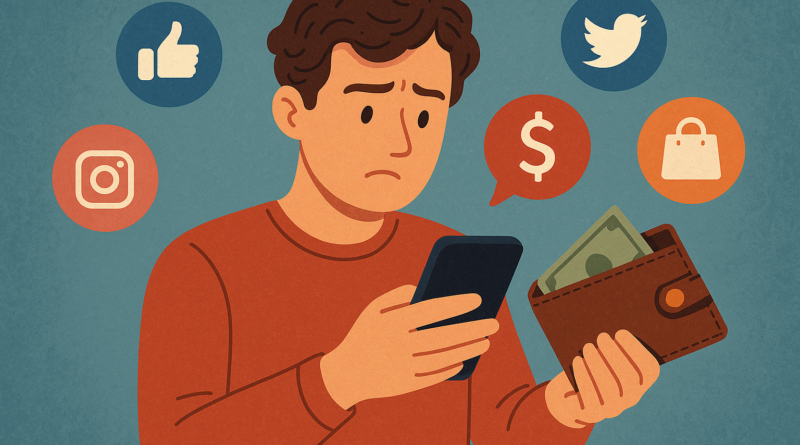How Social Media Is Quietly Draining Your Wallet
We all know social media steals our time. What’s less obvious is how effectively it steals our money. Behind every TikTok skit and Instagram post is a finely tuned system engineered to influence behavior. On the surface it feels like entertainment — but the reality is that much of it is designed to nudge you into spending, often without realizing it.
Social media is now one of the most powerful drivers of consumer behavior in history. Understanding its tricks isn’t about swearing off the internet — it’s about recognizing the game so you can play it on your terms.
The Illusion of Influencer Wealth
Scroll through Instagram or TikTok and you’ll see creators showing off luxury watches, expensive vacations, and high-end lifestyles. The problem? Much of it is smoke and mirrors. Many influencers can’t afford the very products they flaunt. Borrowed clothes, staged homes, and “review” items are presented as if they were everyday possessions.
This creates a distorted baseline. If you’re comparing yourself to a fantasy, you’ll always feel like you’re behind. And when people feel behind, they spend — often to buy a feeling of status or security that never lasts.
FOMO and Social Comparison
Fear of Missing Out (FOMO) has always existed, but social media weaponizes it. We’re no longer just comparing ourselves to the neighbor next door; we’re comparing ourselves to millions of curated highlight reels.
Psychologists have shown that happiness is shaped more by comparison than by absolute income. On social media, the comparisons aren’t just unrealistic — they’re designed to be. You’re only shown the best trips, the best outfits, the best moments. Your brain isn’t wired to calibrate against that distortion. The result? Anxiety, dissatisfaction, and overspending to “catch up.”
Impulse Buying on Autopilot
Nearly half of adults admit they’ve bought something impulsively after seeing it on social media. That’s not an accident — it’s the business model.
Platforms shorten the path from desire to purchase. One-tap checkout, limited-time offers, “shop the look” links — these features reduce the friction that used to give you a moment to think. Add in the dopamine rush of instant gratification, and you’ve got a recipe for overspending.
The Precision of Targeted Ads
Unlike old-school TV commercials, today’s ads are personalized. Social media companies know your age, habits, search history, even your micro-patterns of scrolling and pausing. That’s why the perfect product seems to “find” you at exactly the right moment.
It feels like luck or coincidence — but it’s a data-driven algorithm engineered to predict your weak spots. This level of targeting makes ads less ignorable and more persuasive.
How to Protect Yourself
You don’t have to quit social media to take control of your finances. A few intentional steps go a long way:
- Curate your feed: Unfollow accounts that fuel comparison or make you feel inadequate. Follow people who share useful insights, not just products.
- Create a pause habit: If something feels urgent, wait 24 hours. Most of the impulse fades.
- Separate entertainment from advice: Remember that social media is built to monetize attention. If the content is free, you are the product.
Conclusion
Social media isn’t going away. But if you recognize the financial traps built into it, you can break the cycle. Awareness is the first step. When you stop measuring your life against a curated illusion, you reclaim both your money and your peace of mind.

